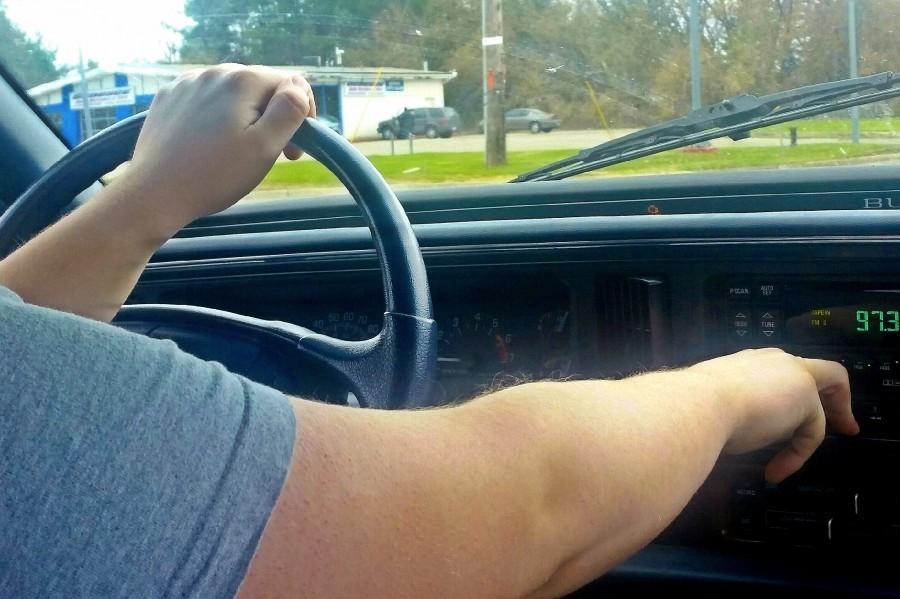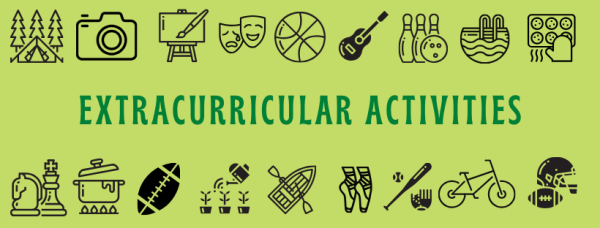Distracted driving proves to be a deadly task
IMAGE / Makenzie Schroeder
A Kearsley student turns up the radio’s volume while driving.
April is National Distracted Driving Awareness Month, bringing attention to crashes caused by drivers that get distracted on the road.
Distracted driving is dangerous and needs to be taken seriously.
It is important for drivers to keep their full attention on the road, not only for their safety, but for the safety of passengers and people in cars around them, as well.
Distracted driving has caused many accidents over the years, leaving many people either injured or dead.
According to stoptextsstopwrecks.org, 3,331 people were killed in crashes involving a distracted driver in 2011, and 387,000 were injured.
Many people do not realize just how dangerous distracted driving can be, or what can be considered a distraction.
Distractions include texting, talking on the phone, adjusting devices or controls in the vehicle, eating or drinking, and talking to passengers in the car.
Distracted driving comes in three different forms: cognitive distraction, visual distraction, and manual distraction.
Cognitive distraction, or mental distraction, is when a driver’s mind is not focused on the road. These drivers could be busy talking to another passenger, preoccupied with personal issues, or simply zoning out.
Junior Katherine Winterhalt knows what it is like to be in an accident caused from driving while cognitively distracted.
“I must have just been zoning out, thinking of other things, and suddenly my car is smashed, bent, and destroyed,” Winterhalt said. “Luckily no one was hurt, but that’s just pure luck.”
Winterhalt rear-ended a parked truck at 55 miles per hour. Since her accident, she has made sure to be completely focused on the road.
“Any kind of distraction can be deadly,” Winterhalt said. “You don’t think a thought could kill you, but it could.”
Even drivers listening to the radio are at risk.
Drivers may focus on listening to the audio, which then takes their focus away from driving and their overall surroundings.
The second type of distracted driving, visual distraction, occurs when drivers look at anything but the road ahead of them. They instead look at the outside scenery, electronic devices in the car, including a GPS, as well as other things.
Many people would not expect a GPS to be considered a distraction to their driving. They are usually viewed as just the opposite — a helpful driving tool.
However, anything causing the driver to look away from the road is a distraction that has the capability of being hazardous.
The last form of distracted driving is manual distraction.
Manual distraction is when the driver takes one or both hands off of the wheel to do things like eat, drink, get a CD, or change the radio station.
Senior Rebecca Barry has been in a crash caused by a manual distraction.
“I was just messing with the radio, and suddenly I hit another car,” Barry said. “I’ve learned that you shouldn’t be messing with anything when you’re driving because it causes you to put yourself and others at risk.”
Another danger is texting while driving; this is particularly dangerous because it involves all three forms of distracted driving.
Mr. Jordan Speith, 2015 Masters champion, recently aired in an AT&T commercial campaigning “It Can Wait.” This campaign focuses on the dangers of texting and driving.
In the commercial, Speith discusses how no text is worth losing a life. When ever he drives, he puts his phone away.
Unfortunately, not everyone exercises this same act of safety.
According to stoptextsstopwrecks.org, 42 percent of young adults are very/somewhat confident that they can text while driving safely, but according to vsofa.org, drivers are 23 times more likely to get into a car accident if texting and driving.
Therefore, it would be safer to just set the cellphone down and focus on the road. The safety of the passengers in the car is more important than sending a text.
Even making a phone call can be a dangerous task while driving, even if it is a hands-free device.
A recent poll by the National Safety Council shows that 80 percent of U.S. drivers believe hands-free cell phones are safer than handheld.
This is because they allow people to keep their eyes on the road and hands on the steering wheel, unlike a normal cell phone.
However, over 30 scientific studies have shown that this is false. There is no safety benefit conferred by going hands free.
The best thing to do while driving is to stay alert and be aware of your surroundings because distracted driving is 100 percent preventable.
Mr. Andy Nester, driver’s education teacher, believes no text or call is ever worth an injury.
“The age and the maturity level (of teenagers), the belief that it’s never going to happen to me, causes them to think just that,” Nester said. “So, my advice would be to turn your phone off and put it away each time you drive.”

Class: Senior
Extracurricular Activities: National Honor Society, DECA
Sports: Varsity dance, varsity tennis
Hobbies/Interests: Reading, shopping,...










